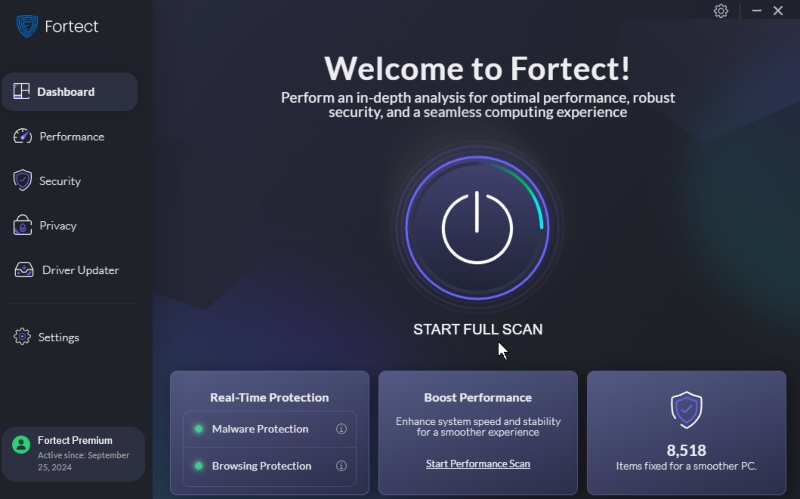Clickjacking Attacks and How to Prevent Them
Clickjacking attacks remain a significant concern for individuals and organizations in a modern internet corporation. Moreover, clickjacking, a UI redress attack, tricks users into clicking on something different from what they perceive, leading to unauthorized actions on their devices.
We will look into clickjacking, how these attacks work, their types, and, most importantly, how to prevent them, especially for Windows users.
What Is Clickjacking?

Clickjacking is a malicious technique attackers use to deceive users into clicking on invisible or disguised web page elements. As a result, it can result in unintended actions such as changing security settings, subscribing to services, or transferring funds. Essentially, users are “hijacked” into performing actions they did not intend, often compromising their security and privacy.
How Do Clickjacking Attacks Work?
Clickjacking attacks exploit the transparency and layering of web elements. An attacker might overlay a transparent button or link on top of a legitimate web page element. When users click what appears to be a benign button, they are interacting with the hidden element.
This deception can lead to unauthorized actions such as changing settings, purchasing, or revealing sensitive information.
Types of Clickjacking Attacks
- Likejacking: Involves tricking users into “liking” a Facebook page or post by overlaying invisible buttons on top of legitimate buttons, misleading users into endorsing content without their knowledge.
- Cursorjacking: Changes the cursor’s appearance to mislead users about what they are clicking on, redirecting clicks to hidden elements and triggering unauthorized actions.
- Filejacking: This technique deceives users into uploading files from their system by overlaying a transparent file upload button on top of a legitimate action button, causing the accidental sharing of sensitive files.
How to Prevent Clickjacking Attacks on Windows Users

Use Content Security Policy (CSP)
Implementing a Content Security Policy can help prevent clickjacking by restricting how content is framed and displayed.
- Add the following HTTP header to your server: Content-Security-Policy: frame-ancestors ‘self’;
- This policy allows only your site to frame your content, blocking attempts from other sites.
Enable X-Frame-Options
The X-Frame-Options HTTP header can prevent your website from being embedded into iframes from other domains.
- Add your server’s HTTP header: X-Frame-Options: DENY or SAMEORIGIN.
- This prevents all or only same-origin domains from framing your site, respectively.
Regular Software Updates
Keeping your software and browsers up-to-date ensures you have the latest security patches and defenses against known vulnerabilities.
- Enable automatic updates for your operating system and browsers.
- Regularly check for updates and install them manually if needed.
- If the system is not up to date, click the Check for Update or Install Updates button, then set Automatic available update to On.
Utilize Anti-Malware and Anti-Spyware Tools
Using comprehensive security software can help detect and prevent clickjacking attempts by monitoring web traffic and identifying suspicious behavior.
- Install reputable anti-malware and anti-spyware tools.
- Keep the security software updated to protect against new threats.
Cyber threats constantly evolve, making it crucial to invest in robust third-party security software. Such solutions offer comprehensive malware scanning and advanced defensive capabilities, providing essential protection like Fortect.

Fortect Premium provides real-time protection by automatically scanning for various threats, including clickjacking attacks and other malware. It isolates detected threats, sends real-time notifications, and implements fixes to keep your Windows PC optimized and secure.
Download and Install Fortect now.
Educate Users
Awareness and training can significantly reduce the risk of falling victim to clickjacking attacks.
- Educate users about the dangers of clickjacking and how to recognize suspicious behavior.
- Encourage safe browsing habits, such as not clicking on unfamiliar links and verifying the legitimacy of websites.
Consequences of Clickjacking

- Unauthorized Access: Users may unknowingly grant attackers access to sensitive information or systems.
- Financial Loss: Clickjacking can lead to unauthorized transactions or purchases, resulting in financial loss.
- Reputation Damage: Users might inadvertently spread malicious links, damaging their reputation and trust.
- Compromised Security: Security settings can be altered without user consent, weakening defenses against future attacks.
Conclusion
Clickjacking poses a real threat to online security, but understanding its mechanisms and implementing preventive measures can significantly reduce the risk. Windows users can protect themselves from these deceptive threats using security headers like Content Security Policy and X-Frame-Options, keeping software updated, utilizing security tools, and educating users.
Stay vigilant and proactive to maintain a secure online environment.




